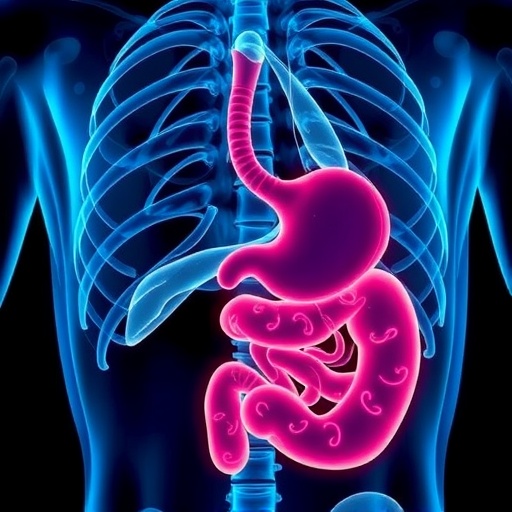In recent years, the process of ferroptosis has garnered significant attention within the medical and scientific communities. As researchers delve into the underlying mechanisms of this unique form of cell death, its implications on various diseases become increasingly evident. One of the most pressing areas of interest is its association with sepsis, a life-threatening condition characterized by the body’s extreme response to infection. Recent findings published by Zhou, Huang, Liu, and colleagues shed light on the potential role that ferroptosis plays in the development and progression of sepsis, suggesting a paradigm shift in the way we understand this complex condition.
Ferroptosis is distinct from other forms of cell death such as apoptosis and necrosis. This novel form of regulated cell death is driven largely by iron-dependent lipid peroxidation. In the scientific literature, it has been shown that the accumulation of lipid peroxides leads to cellular toxicity in various pathological scenarios. The realization that ferroptosis can be intricately linked to conditions like sepsis highlights the importance of exploring new avenues for therapeutic interventions.
The pathological role of ferroptosis in sepsis is particularly intriguing when considering the disease’s multifaceted nature. Sepsis results from a dysregulated immune response to infection, resulting in systemic inflammation and often leading to organ dysfunction and failure. As the authors elucidate, the dual nature of iron—both as a necessary nutrient for various cellular processes and a potential toxin when mismanaged—adds complexity to this relationship. Increased iron levels in sepsis could catalyze ferroptosis and exacerbate tissue injury, further worsening the patient’s condition.
The study also emphasizes the interplay between ferroptosis and various immunological factors during sepsis. Immune cells, especially macrophages, play a crucial role in regulating inflammation and pathogen clearance. The induction of ferroptosis in these immune cells could potentially impair their function, allowing pathogens to proliferate unabated. Such processes necessitate a thorough understanding of how ferroptosis influences immune responses, particularly the dynamics of inflammation during septic episodes.
One of the remarkable findings of this research is the strategic targeting of ferroptosis as a therapeutic approach in treating septic patients. Current treatments focus on managing sepsis through antibiotics and supportive care; however, modulating ferroptosis could provide an additional layer of intervention. The authors propose that pharmacological agents capable of either inducing or inhibiting ferroptosis may hold promise in mitigating sepsis-related organ damage. Such therapies could potentially transform the existing treatment landscape.
Furthermore, the delineation of specific lipid peroxidation pathways, known to facilitate ferroptosis, has provided substantial insight into potential biomarkers for sepsis. Measuring the levels of certain lipid metabolites could aid in the early diagnosis of sepsis, allowing for timely interventions. This could be particularly critical in clinical settings, where rapid identification of sepsis can significantly improve survival rates.
In addition to the aforementioned cellular mechanisms, the study also touches upon the role of mitochondrial function in ferroptosis. Mitochondria are central players in both energy metabolism and the regulation of apoptosis. Dysfunction in these organelles is often observed in septic patients and may contribute to the autophagic processes that underlie ferroptosis. Understanding how mitochondrial dynamics are affected during sepsis could offer further insights into potential therapeutic strategies.
The review also highlights the importance of research in animal models to elucidate the precise pathways through which ferroptosis influences sepsis progression. These models allow researchers to monitor biological processes in a controlled environment, generating hypotheses that can be tested in clinical settings. Such experimental approaches can also expedite the identification of new drug candidates aimed at manipulating ferroptosis in sepsis.
Lastly, the multifactorial nature of sepsis poses significant challenges in creating one-size-fits-all treatment solutions. The variability of patient responses underscores the necessity for personalized medicine that takes into consideration individual biochemical pathogens. The interplay between ferroptosis and host factors may influence the outcome of treatment modalities, advocating for further studies to tailor approaches to distinct patient populations.
In summary, the emerging role of ferroptosis in sepsis underscores an exciting frontier in medical research. As our understanding deepens, the potential to develop novel therapeutic strategies for sepsis becomes more tangible. The integration of insights from ferroptosis and sepsis could pave the way for innovative interventions that may ultimately improve patient outcomes in what remains a challenging clinical conundrum.
The dialogue surrounding ferroptosis, particularly in relation to sepsis, continues to evolve, inviting questions about how we might reframe our approach to managing this critical condition. With ongoing research, the objective is clear: to translate these findings into effective treatments that could save countless lives facing the threat of sepsis. As the scientific community remains vigilant, the hope is that future breakthroughs will emerge, refining our understanding of ferroptosis and its implications for human health and disease.
As we look forward to subsequent studies building on the foundations laid by Zhou and colleagues, it becomes imperative that we continue to explore uncharted territories in molecular biology. Only then can we truly unlock the secrets of ferroptosis and its significant implications on health and disease, transforming theoretical insights into viable clinical practices.
Subject of Research: The role of ferroptosis in sepsis
Article Title: The emerging role of ferroptosis in the pathological development and progression of sepsis
Article References:
Zhou, HT., Huang, J., Liu, YK. et al. The emerging role of ferroptosis in the pathological development and progression of sepsis.
Military Med Res 12, 81 (2025). https://doi.org/10.1186/s40779-025-00665-5
Image Credits: AI Generated
DOI: https://doi.org/10.1186/s40779-025-00665-5
Keywords: ferroptosis, sepsis, cell death, inflammation, therapeutic interventions, biomarkers, mitochondrial function.
Tags: cell death and sepsisferroptosis in sepsisimmune response in sepsisiron-dependent lipid peroxidationlipid peroxides and cellular toxicitymechanisms of ferroptosispathological implications of ferroptosisrole of ferroptosis in inflammationsepsis progression and treatmenttherapeutic interventions for sepsisunderstanding sepsis mechanismsunique forms of cell death





